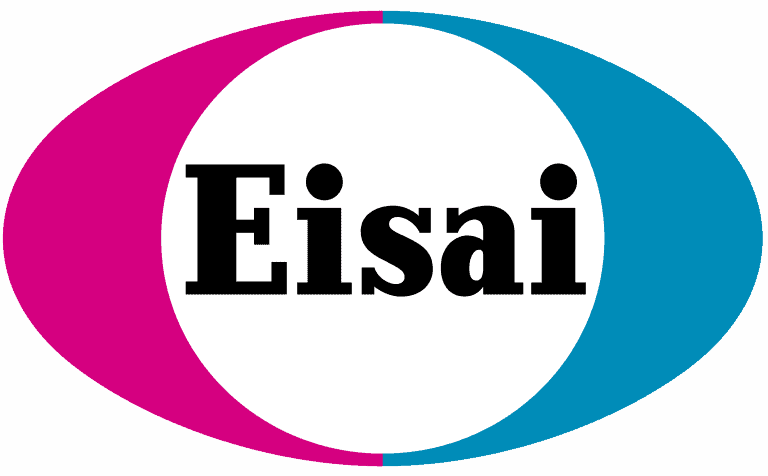DSF Funded Research
DSF is dedicated to funding the highest caliber research on Dravet syndrome and associated epilepsies. Our focus is on research projects that will find new treatments and improve the quality of life for those living with Dravet syndrome.
DSF has Contributed Over . to Research
DSF is dedicated to funding the highest caliber research on Dravet syndrome and associated epilepsies. Our focus is on research projects that will find new treatments and improve the quality of life for those living with Dravet syndrome. DSF places a high priority on funding research that has a clear path to genetic understanding, clinical application, and/or therapeutic development. Research applications undergo rigorous scientific review and are judged principally on novelty of the hypotheses, innovation, scientific quality, strength of approach, likelihood of success, and importantly, projects that are relevant to the needs of the patient community.
DSF grant applications go through a rigorous NIH-style scientific review process, with careful consideration given to conflicts of interest bringing in additional outsdie scientific reviewers when necessary. The scientific review is followed by final decisions from our Board of Directors, who reflect not only on the scientific merit, but also the priorities of the patient community.
Learn more about Grant Categories and Funding Opportunities
View DSF’s Roadmap to a Cure
View DSF’s Gene Therapy Summary
2023 Research Funded by DSF
Extended monitoring for cardiac arrhythmias in Dravet syndrome
Mechanistic investigation in a novel mouse model of early-onset SCN1A-related disorders
Establishing the role of the noradrenergic network during seizures in Dravet syndrome
Generating a shareable clinico-genomic data resource for Dravet syndrome
Development of an AI-powered Dravet Syndrome Ontology
2022 Research Funded by DSF
Effect of odorant on mortality and extended amygdala activation in Dravet syndrome
2021 Research Funded by DSF
Lymphoblast cell lines as a model to uncover metabolic defects in Dravet syndrome
Targeting Molecular Responses to Seizures in Dravet Syndrome
Ketogenic Diet Modulated Brain Energy Metabolism in Dravet Syndrome
Optimizing the Regional Administration of SCN8a-targeting RNAi Therapy
Dravet Syndrome International Consensus Project
Past Research Funded by DSF
2020
Eric J. Kremer, PhD- Institut de Génétique Moléculaire de Montpellier, Moran Rubinstein, PhD- Tel Aviv University, Ethan Goldberg, MD, PhD- University of Pennsylvania/CHOP
$150,000 – Research Grant (2-year project)
Optimizing a novel SCN1A delivery approach for Dravet syndrome therapy



The vast majority of Dravet syndrome cases are caused by mutations in one of the two copies of the SCN1A gene. The SCN1A gene provides instructions to build a protein that forms a sodium channel called “NaV1.1”. Therefore, as Dravet mutations hamper the function of NaV1.1, restoring the activity of this protein with gene therapy is a logical approach to treat the severe epilepsy and Dravet syndrome-associated developmental delay. An obstacle for gene therapy is the large size of the NaV1.1. While most methods of gene transfer cannot circumvent this obstacle, an adenovirus vector can. Our preliminary data, using a beta version of the vector, already demonstrated the therapeutic potential of this approach. Indeed, administration of such gene therapy treatment to Dravet mice, at the onset of severe epilepsy, reduced the occurrence of spontaneous seizures and improved their survival.
 Cameron S. Metcalf, PhD- University of Utah
Cameron S. Metcalf, PhD- University of Utah
$165,000 – Research Grant (2-year project)
Brainstem glial control of respiration in a mouse model of Dravet syndrome
Patients with Dravet syndrome (DS) suffer from seizures as well as numerous behavioral, cognitive, and metabolic comorbidities. Thus, this disorder is a major challenge to not only patients but also parents, caregivers, and providers for those affected. Further, a high mortality rate due to Sudden Unexpected Death in Epilepsy (SUDEP) is a major source of fear and concern for families affected by DS. The purpose of the outlined studies is to explore a novel potential mechanism of SUDEP in DS. While we understand risk factors and mortality in DS, in order to advance this field of study more information is needed to understand the mechanisms contributing to SUDEP. We have instituted a mouse model of DS with important face validity: pharmacoresistance, hyperthermia-induced seizures, spontaneous seizures, and a high mortality rate. Using this model, the studies outlined in this proposal will address changes in respiratory neurocircuitry that affect breathing following seizures. We propose that in DS, changes in the brainstem may be driven by the responses of glial cells to seizures. Further, these studies also include an intervention that may potentially reduce mortality and improve outcomes. Therefore, this project will advance understanding of the mechanisms of SUDEP in DS and provide a potential therapeutic avenue to minimize mortality risk.
Ala Somarowthu, PhD- Children’s Hospital of Philadelphia
$50,000 – Postdoctoral Fellowship (1-year project)
Seizure prediction and detection in a mouse model of Dravet syndrome via machine learning
Dravet syndrome is a chronic infantile myoclonic epilepsy that is not entirely curable with the available treatments in every patient. Current research is focusing on new technologies for the cure and intermittent relief for a better life without seizures. Impending seizure prediction or early detection can be useful for on-demand intervention for ceasing the seizures. The current study proposed to design a seizure detection/prediction system by implementing advanced machine learning algorithm on extracted behavioral signatures in mouse model of Dravet syndrome. The developed seizure detection system will be further executed in a closed loop framework to facilitate the on-demand intervention.
2019
 Danielle Andrade, MD – University of Toronto
Danielle Andrade, MD – University of Toronto
$150,000 – Research Grant (2 year project)
Multi-modal assessment of adults with Dravet syndrome
Dr. Andrade plans to better characterize the adult patient with Dravet syndrome. She will study balance, gait, posture, memory, ability to perform day-to-day activities, and genome in a cohort of adult with Dravet syndrome to test the hypothesis that there may be premature brain aging in adult patients. They also plan to explore whether previous use of contraindicated medications influence adult outcomes.
 Jennifer A. Kearney, PhD – Northwestern University
Jennifer A. Kearney, PhD – Northwestern University
$150,000 – Research Grant (2 year project)
MicroRNA-mediated modification of Dravet syndrome
Dravet syndrome is a severe, infant-onset epilepsy with co-occurring developmental delays, motor dysfunction, and high mortality risk. Seizures are frequent and prolonged, and respond poorly to available medicines. There is an urgent need for novel treatments to improve outcomes and quality of life for individuals with Dravet syndrome and their families. Dravet syndrome is most often caused by loss-of-function of one copy of the SCN1A gene that encodes the Nav1.1 voltage-gated sodium channel protein. This results in approximately 50% lower expression of Nav1.1 relative to what is normally needed for nervous system function. Fluctuations in the precise level of Nav1.1 expression may account for some of the clinical variability observed among individuals with Dravet syndrome.
microRNAs are small RNA molecules that regulate expression of gene products, and have the potential to modulate expression of Nav1.1 in the context of Dravet syndrome. The major goal of this proposal is to determine if severity of Dravet syndrome is influenced by microRNAs. We identified two microRNAs that are elevated following seizures and can target SCN1A to repress expression. Thus, elevation in these microRNAs may push Nav1.1 expression below 50% and hasten disease onset or progression. Conversely, suppression of these microRNAs or blockade their binding site on SCN1A may represent a novel therapeutic strategy for Dravet syndrome. Our proposed study will evaluate the potential of these microRNAs to modulate Nav1.1 expression and determine whether a therapy based on this miRNA-SCN1A interaction holds promise.
Vania Broccoli, PhD – San Raffaele Institute, Italy 
$75,000 – Grant for Genetic Approaches (seed funding for 1 yr project)
Gene therapy for Dravet Syndrome by CRISPR/dCas9 mediated activation of SCN1A
Dravet Syndrome (DS) is mostly caused by mutations in SCN1A gene that typically affect and inactivate only one of the two copies of the gene. We learned from animal models that the amount of functional sodium channel NAV1.1 produced in this genetic condition is not sufficient for proper neuronal activity. Mutations impact mainly on inhibitory interneurons (INs) that become less performing in regulating the activity of excitatory neurons. This unbalance in neuronal activity ultimately results in severe seizures that cannot be successfully controlled by any therapy.
We reasoned that a possibility to cure this pathology would be the restoration of normal levels of functional NAV1.1 protein. A way to reach this goal is to stimulate the expression of the normal copy of the gene by a novel technology named activatory CRISPR/dCas9. dCas9 activator is a powerful tool that can be specifically targeted to SCN1A gene and enhance protein production to a level that can possibly restore correct function of GABAergic inhibitory INs. This technology could remove the causative mechanism of the disease and ultimately revert DS symptomatology.
A series of observation collected in our laboratory already indicate that SCN1A gene is responsive to dCas9 activator at least in cells. Now we aim to improve critical aspects of this powerful technology in order to make it more suitable for future delivery in DS patients. We have to device a system to fit the Cas9 system in recombinant viral vectors (AAV9) that are commonly used for gene therapy in patients and test their ability to rescue the activity of murine neurons. In addition, the efficacy of this technology will be tested in a human model of DS, that is in human neurons differentiated in our laboratory from stem cells obtained from patients’ skin. In this setting we will assess weather human SCN1A gene can be responsive to activatory CRISPR/dCas9 as well.
2018
 Gemma Carvill, PhD – Northwestern University
Gemma Carvill, PhD – Northwestern University
$165,000 – Research Grant (2 year project)
Pathogenic splicing mechanisms of an SCN1A poison exon in Dravet syndrome
We hypothesize that variants in a subset of patients with Dravet syndrome cause changes in the way SCN1A is made. Specifically, in cells other than the brain, an exon, called a poison exon is included in SCN1A and results in a shortened protein that is non-functional. We have identified patients with mutations that cause the erroneous inclusion of this poison exon. Our goals are to: 1. identify the proteins that control inclusion (or splicing) of the SCN1A poison exon, and; 2. Test the effect of inclusion of this poison exon on production of SCN1A protein and the function of these neurons. Successful completion of these aims will have the following deliverables: 1. The list of proteins that control SCN1A poison exon splicing; 2. A map of the DNA sites to which these proteins bind; 3. An experimental paradigm in which we can test whether we can rescue the splicing defects in these cells toward new RNA-based therapeutics. The definition of the DNA intervals that are important sites for RNA splicing will allow us to better determine which intronic variants identified in patients with epilepsy are more likely to be disease-causing. Moreover, while RNA-based therapeutics such as ataluren are currently in phase 2 clinical trials, only a limited number of patients with Dravet syndrome, with very specific mutations (nonsense variants) are eligible for participation in this trial. In this study, we will address a basic fundamental question involving SCN1A expression that has yet to be addressed: What are the RNA-binding proteins that control splicing of this SCN1A poison exon? If we understand these mechanisms we may be able to manipulate them in the future for novel RNA-based therapeutic interventions.
 John M Schreiber, MD – Children’s National / Children’s Research Institute
John M Schreiber, MD – Children’s National / Children’s Research Institute
$150,000 – Research Grant (2 year project)
Subclinical myocardial damage in Dravet syndrome, other refractory convulsive epilepsy, and convulsive status epilepticus
Dr. Schreiber’s study will examine whether subtle changes in heart function can be seen in children with Dravet syndrome, other forms of severe refractory epilepsy, and prolonged seizures (status epilepticus). Speckle tracking echocardiography is a non-invasive ultrasound technique that can measure certain aspects of heart function (strain) that correlate with heart injury. We hypothesize that acute and/or repeated damage to the heart in childhood – related to seizures, and/or direct effects of SCN1A mutations on the heart muscle – may lead to subtle injury, evident on speckle tracking echocardiography, which increases the risk for sudden unexpected death in epilepsy (SUDEP).
 Sharon Swanger, PhD – Virginia Polytech Institute and State University
Sharon Swanger, PhD – Virginia Polytech Institute and State University
$150,000 – 2 year research grant
Balancing thalamic excitation and inhibition in a Dravet syndrome mouse model
Patients with Dravet syndrome have altered neural activity in the thalamus, a brain region involved in the generation and spread of seizures. Our work utilizes a Dravet syndrome mouse model to test if novel small molecules that modulate a subpopulation of glutamate receptors can correct neural activity in the thalamus. This new therapeutic approach for Dravet syndrome has great potential impact as glutamate receptors mediate excitatory brain activity involved in all seizures. Results of this study will advance our knowledge of mechanisms underlying disrupted brain activity in Dravet syndrome and, if successful, will provide a new strategy for correcting brain activity and reducing seizures.
 Rajeswari Banerji, PhD – University of Colorado Denver
Rajeswari Banerji, PhD – University of Colorado Denver
$50,000 – 1 year postdoctoral fellowship
Identifying a novel metabolic target for improving disease outcomes in Dravet syndrome
The focus of Dr. Banerji’s research is on a genetic form of childhood epilepsy called Dravet syndrome (DS), caused by mutations in the sodium channel genes resulting in severe frequent seizures, developmental delays and sometimes early death. Using the zebrafish model of DS, we recently uncovered metabolic deficits as a characteristic feature for the disease model. A deeper understanding is required to identify specific metabolic drug targets, to develop novel therapies to treat DS, and other genetic epilepsies in general. Her preliminary work identified a novel drug that could improve metabolic defects, particularly glucose metabolism, seizures and/or behavioral alterations in this disease model. The goal of the proposal is to validate a metabolic gene as a therapeutic target for DS. She will be testing the anti-epileptic potential of the drug and validate its therapeutic target that improves the disease outcomes for DS. This work will help to understand the role of energy metabolism, particularly defects in glucose metabolism as the primary mechanism explaining DS etiology.
 Jessica Chancey, PhD – University of Texas at Austin
Jessica Chancey, PhD – University of Texas at Austin
$50,000 – 1 year postdoctoral fellowship
Mechanisms of altered neuronal excitability and synaptic integration in a mouse model of Dravet syndrome
Genes linked to Dravet syndrome (DS) have been identified, but we do not yet understand how these genetic changes lead to dysfunctional brain cells and circuitry causing the prolonged seizures, developmental delays, and cognitive deficits of DS. One gene linked to DS is SCN1B, which encodes the b1 protein, an important modulator of brain development and neuronal activity. Dr. Chancey studies neurophysiological changes in mice genetically engineered to lack the SCN1B gene. These mice show many of the same symptoms as DS patients. She studies how loss of b1 alters the activity of and communication between brain cells, with a goal of linking the genetic changes caused by loss of b1 with the complex pathophysiology of DS, potentially identifying new therapeutic targets.
2017
 Louis Dang, MD, PhD – University of Michigan
Louis Dang, MD, PhD – University of Michigan
$50,000 – Postdoctoral Fellowship (1 year project)
Using human stem cell-derived neurons and cerebral organoids to model pathogenesis in Dravet syndrome
Dravet Syndrome (DS) is typically caused by mutations in the SCN1A gene. In order to determine how this mutation causes seizures, we have taken DS patient skin cells and reprogrammed them into stem cells. We will differentiate the stem cells into “mini brains,” 3D structures that resemble the developing human brain, to study the properties of excitatory and inhibitory neurons as they mature together. We also have found that excitatory DS neurons are hyperactive, possibly from overcompensation in SCN8A, a cousin of SCN1A. We will attempt to restore the normal activity in DS patient-derived excitatory neurons by decreasing SCN8A function.
 David R. Hampson, PhD – University of Toronto
David R. Hampson, PhD – University of Toronto
$143,000 – Research Grant (2 year project)
Exploring gene therapy to treat sudden unexpected death and other pathological features of Dravet syndrome
The most severe features of Dravet Syndrome are drug-resistant epileptic seizures and sudden unexpected death in epilepsy (SUDEP). Current pharmacotherapy for treating seizures in Dravet syndrome is often not effective, or is only effective for a short time. All current drugs used are small molecules that are chemically synthesized or purified from botanical sources. In contrast, “biological therapeutics” rely on large “macromolecules” that often have more robust and longer term beneficial effects. One class of biologics employs viruses that act as vectors (viral vectors) to
carry molecules into cells, including neurons, where they can have protracted therapeutic effects. One type of viral vector called “adeno-associated virus” (AAV) is currently being tested in many human clinical trials covering a wide range of diseases and disorders, including neurological disorders. About half the human population has been exposed to AAVs and carries antibodies to AAV in the blood. Importantly, no known human disease has been linked to AAV infection. Thus, to the best of our knowledge, AAV vectors are safe and extremely useful for gene therapy. A goal of this project is to create and test viral vectors containing the DNA coding for several different proteins, such as sodium channel subunits, in a mouse model of Dravet syndrome, that we hypothesize could stop or reduce seizures and/or SUDEP.
 Daniel Mulkey, PhD – University of Connecticut
Daniel Mulkey, PhD – University of Connecticut
$150,000 – Research Grant (2 year project)
Disordered breathing contributes to SUDEP in a mouse model of Dravet syndrome
Dravet syndrome (DS) is a severe form of epilepsy with a high risk of sudden unexpected death in epilepsy (SUDEP). Cardiac failure is considered the main cause of death in DS; however, despite evidence that disordered breathing can precipitate cardiac problems and respiratory failure is a leading cause of SUDEP, respiratory function in DS has not been characterized so it is not known whether disordered breathing contributes to sudden death in DS. Therefore, there is an urgent need to understand how DS-associated gene mutations affect respiratory activity. The proposed experiments address this need by characterizing respiratory behavior at the cellular, neural network and whole animal levels in a mouse model of DS. By understanding whether and how DS-associated gene mutations influence respiratory control, this work will lay a foundation for development of new treatments and diagnostic tests for SUDEP in DS.
2016
 Jeffrey Calhoun, PhD – Northwestern University
Jeffrey Calhoun, PhD – Northwestern University
$50,000 Postdoctoral Fellowship (1 year project)
Target validation of thalamic T-type calcium channels in a mouse model of Dravet syndrome
Modifier genes influence the severity of epilepsy in Dravet Syndrome and other genetic epilepsies. These epilepsy modifier genes may represent targets for the design of novel therapeutic interventions. We previously identified a modifier gene, Cacna1g, that influences seizure susceptibility in a mouse model of Dravet Syndrome. One goal of this fellowship is to determine whether Cacna1g and related gene Cacna1h are potential molecular targets for therapy using genetic and pharmacological tools in a mouse model of Dravet Syndrome. The other goal of this fellowship is to map the neuronal circuits activated during seizure initiation and propagation in a mouse model of Dravet Syndrome.
 Aliesha Griffin, PhD – University of California, San Francisco $50,000 Postdoctoral Fellowship (1 year project)
Aliesha Griffin, PhD – University of California, San Francisco $50,000 Postdoctoral Fellowship (1 year project)
Optimization of clemizole as a novel treatment for Dravet syndrome
There is a significant need to develop new therapeutic treatments for Dravet syndrome patients as many children suffer persistent drug resistant seizures. Like Dravet syndrome patients, zebrafish with a mutation in SCN1A gene also have seizure-like behaviors.The antihistamine clemizole was able to significantly reduce these seizure-like episodes. However, antihistamines are typically not recommended for Dravet syndrome patients. By modifying the chemical structure of clemizole we can remove its antihistamine activity and improve its antiepileptic properties. These new compounds will be tested for antiepileptic activity using our Dravet syndrome zebrafish model. I anticipate these new versions of clemizole will provide a platform for developing a new treatment for Dravet syndrome.
 Evangelos Kiskinis, PhD – Northwestern University
Evangelos Kiskinis, PhD – Northwestern University
$165,000 – Research Grant (2 years)
Using patient specific iPSC-derived neurons to identify molecular biomarkers of drug treatment responsiveness in Dravet syndrome
Dravet syndrome remains particularly difficult to treat, with one third of all patients failing to respond to any of the currently available anti-seizure medication. In all cases it is hard to predict how a patient will respond to a drug and clinicians often have to resolve to a trail-and-error approach that can have devastating repercussions for patients and their families. Using Dravet patient-specific stem cells we aim to carefully examine brain cells from patients that have shown good seizure control after drug treatment as well as patients that have been completely refractory to drug treatment. By studying the electrical patterns, the molecular properties and the responses to drugs of these brain cells grown in a dish we aim to: a) understand what makes brain cells respond well to drugs, and b) determine whether we can predict what drug would work best for each patient simply by studying their cells. If successful, our approach will have a major impact in how we diagnose and treat Dravet as well as patients suffering with other kinds of epilepsies.
 Dennis Lal, PhD – The Broad Institute
Dennis Lal, PhD – The Broad Institute
$150,000 – Research Grant (2 years)
A Novel System to evaluate SCN1A Pathogenicity
Predicting the consequences of mutations identified in clinical screens is far from easy. This is particularly true for genes like SCN1A where variants can be neutral or lead to a wide spectrum of disorders. We will develop novel methods to computationally distinguish pathogenic from benign variants in SCN1A and related genes in patients with Dravet syndrome (DS) and related epilepsies. In our analyses, we will incorporate chemical, biological and a wide range of additional information of mutations in DS-genes to identify differences between patients and controls. The developed methods and findings will be available online to aid variant prediction and drug development.
 Ruth Westenbroek, PhD – University of Washington
Ruth Westenbroek, PhD – University of Washington
$164,000 – Research Grant (2 years)
Understanding the mechanisms and efficacy of cannabidiol (CBD).
Dravet Syndrome (DS) is one of the most severe childhood neuropsychiatric diseases, with symptoms including febrile seizures and intractable epilepsy, developmental delay, ataxia, sleep disorder, autistic-like behaviors, frequent premature death, and profound cognitive deficit. Life-threatening pediatric epilepsies such as DS are unresponsive to standard therapies. Clinical and preclinical results suggest that cannabidiol (CBD), a non-psychoactive derivative of marijuana, may have novel antiepileptic effects. We will test the hypothesis that CBD attenuates or completely eliminates thermally evoked seizures, spontaneous seizures and/or sudden unexpected deaths using our mouse model of DS. Mice with heterozygous loss-of-function mutations in the Scn1a gene encoding Nav1.1 voltage-gated sodium channels have been shown to be an exact phenocopy of the human DS disease and provide us a unique opportunity to understand the mechanism of action of CBD. Determination of the underlying mechanisms will not only provide a solid basis for the development of a new class of anti-epileptic medicines to benefit pediatric epilepsies but also help the field to better understand key physiological processes that can be targeted to control intractable seizures. The mechanisms investigated here will help guide the next stages of this research in our attempt to discover potentially effective drug combinations for intractable epilepsies.
 Orrin Devinsky, MD – NYU Comprehensive Epilepsy Center and the Saint Barnabas Institute of Neurology and Neurosurgery.
Orrin Devinsky, MD – NYU Comprehensive Epilepsy Center and the Saint Barnabas Institute of Neurology and Neurosurgery.
$50,000 – Ataluren Trial
PTC Therapeutics, the Dravet Syndrome Foundation, and FACES are sponsoring a trial of Ataluren to treat children with treatment-resistant epilepsy associated with Dravet Syndrome or CDKL5 due to stop codon (nonsense) mutations. These are DNA changes in which one DNA nucleotide is substituted for another one and instead of the three letter DNA sequence coding for an amino acid, it codes for a message to prematurely stop the amino acid chain and prematurely terminate the SCN1A or CDKL5 protein, resulting in a roughly 50% reduction in the amount of functional protein since these partial proteins are typically metabolized rapidly by nerve cells. Eight children with Dravet Syndrome and eight children with CDKL5 will be enrolled in this double-blind placebo controlled crossover study.
 Stephanie Makinson, PhD – The Gladstone Institutes
Stephanie Makinson, PhD – The Gladstone Institutes
DSF & AES Early Career Research Partnership – $45,000 (1 year project)
The therapeutic potential of the thalamus in Dravet syndrome
Dravet syndrome (DS) is a severe childhood epilepsy for which there is no cure and current treatments often cause major side effects. Most patients with DS have a mutation in the gene, SCN1A, which changes the function of the SCN1A protein and causes seizures. While inhibitory cells in the thalamus express high levels of SCN1A, we only recently learned that this region of the brain is abnormal in Dravet syndrome. With a well-established mouse model of DS that expresses the mutated human Scn1a gene, we showed, for the first time, that the thalamus is pathological and can generate epileptic activity in Dravet syndrome mice. We then manipulated the activity of the inhibitory cells in the thalamus by delivering light specifically to these cells, which interrupted ongoing seizures in freely behaving DS mice. In the proposed project, our goal is to use novel optical approaches to either disrupt or order the activity of inhibitory cells in the thalamus to determine if they cause seizures in Dravet syndrome mice. This work will serve as a proof-of-concept that we could target the thalamus to treat, and potentially cure, Dravet syndrome.
2015
Alex Nord, PhD – University of California Davis
DSF Research Award – $110,000 (2 year project)
Regulation of SCN1A expression as pathogenic mechanism in Dravet Syndrome
The majority of individuals with Dravet syndrome (DS) carry mutations in the SCN1Agene, causing a non-functional Nav1.1 protein to be produced in the brain. However, other genetic factors beyond SCN1A coding mutations likely account for the substantial remaining DS causal burden. The activity of genes, such as SCN1A, is controlled by regulatory DNA elements that turn genes on at the right time and place during development. We hypothesize that mutations in regulatory DNA elements that controlSCN1A activity in the brain represent a significant genetic mechanism in DS and SCN1A-associated disorders. The goals of this study are to understand the role of regulatory DNA elements and SCN1A gene expression using mouse models and genomic technologies. These experiments may reveal novel pathological mechanisms and improve genetic diagnosis in DS by enabling screening of important regulatory DNA not captured by current tests.
John C. Oakley, MD, PhD – University of Washington
DSF Research Award – $160,000 (2 year award)
Understanding the relationship between gene mutation, seizures, and cognitive impairment in Dravet syndrome
Seizures and co-morbidities in Dravet syndrome (DS) are not well treated with current therapies and no cure exists. In most cases, DS is caused by mutations in the gene SCN1A resulting in reduced expression of a voltage-gated sodium channel Nav1.1 critical to the excitability of neurons. Work by myself and many others shows that inhibitory cells in the nervous system are particularly effected. We hypothesize that the resulting changes in network function are the cause of seizures and co-morbidities such as cognitive disability. As seizure frequency and severity increases prior to difficulties with memory, learning, and other cognitive functions, it is tempting to attribute impairments to seizure-related brain injury which, if involving cell death, may be irreversible. This has led to a focus on improved seizure control as the primary treatment for cognitive disability. However, recent cognitive outcome studies failed to demonstrate a relationship between seizure type and severity and outcomes. In addition, in our own work in mouse models of DS, we have not found evidence of cell death. This suggests that the network remains, in principle, intact and that restoring normal SCN1A function, even after seizures have begun, may substantially improve network function, seizure control, and cognition. In the proposed study, we seek to determine in our well-validated mouse model of DS whether a reduction in Scn1a expression beginning in adulthood, in the absence of prior seizures, is sufficient for seizure susceptibility and cognitive impairment. To determine whether, under optimal conditions, restoring Scn1a expression, gene therapy, improves cognition and seizures. These studies will provide insights into the potential outcome of gene therapy under the best conditions in which near total correction of the genetic defect is expected and provide preliminary data to support further, more detailed work into the specific brain regions, cell-types, and degree of restored Scn1a expression required to adequately treat seizures and multiple comorbidities, information critical to the development of potential gene therapy in humans.
Samir Das, PhD – University of British Columbia
DSF Postdoctoral Fellowship – $50,000 (1 year project)
Structure and function of the sodium channel Beta 1 subunit: a target for Dravet syndrome mutations
Our neurons can mediate extremely rapid messages through the use of electrical signals. Such signals arise from the movement of tiny charged particles such as sodium ions into the cell. The sodium ions can only enter the cells through a protein, termed ‘sodium channels’. Their opening and closing decide how much sodium can enter the cell which directly affects the brain function. Simple changes in the genetic code can create faulty channels leading to severe epilepsy and Dravet syndrome to infants. Here, we will solve the high resolution structures of the sodium channel both “normal” and “diseased” condition which will shed light on the disease mechanism.
Alison Muir, PhD – University of Washington
DSF Postdoctoral Fellowship – $50,000 (1 year project)
Dravet Syndrome – Where are the missing mutations?
Making a genetic diagnosis in Dravet syndrome is important for many reasons. First, it gives families and physicians insight into disease management and risks for further complications. It also helps discussion about recurrence risk for future pregnancies and influences medication decisions. Finally, it allows researchers insight into how the disease manifests and provides avenues for drug development. However, for 20% of families with Dravet syndrome, no genetic cause is identified. Certain types of mutations are missed by conventional testing and may be present in patients without a genetic diagnosis. We propose to use innovative approaches to hunt for two types of these “missing mutations”: 1) “mosaic” mutations of SCN1A found in only a subset of cells and tissues. 2) “regulatory” mutation that cause changes to how much protein is made.
2014
Elaine C. Wirrell, MD – Mayo Clinic
DSF Research Award – $60,000 (1 year project)
Dravet Syndrome North American Consensus Project (Funding provided through an unrestricted grant from GW Pharmaceuticals)
A core group of pediatric epilepsy specialists, with input from Dravet Syndrome Foundation, has identified important clinical issues relating to the diagnosis and management of patients with Dravet syndrome, focusing specifically on diagnostic testing, course of epilepsy, treatment of seizures (both prophylactic treatment as well as management of status epilepticus), developmental concerns and associated co-morbidities (i.e., sleep disorders, gait problems, autonomic concerns, etc). A panel consisting of 18-20 experts on Dravet syndrome, (consisting of both families of children with Dravet syndrome as well as US and Canadian neurologists with particular expertise in managing patients with this type of epilepsy) will be convened. The goal of this study is to utilize a modified Delphi consensus method to establish best practice guidelines for:
a. Timely diagnosis of Dravet syndrome in a cost effective manner
b. Pharmacologic and dietary treatment of Dravet syndrome to maximize seizure control, reduce frequency of status epilepticus and improve long- term developmental outcomes
c. Identification and management of co-morbidities associated with Dravet syndrome
Theodore R. Cummins, PhD – Indiana University
DSF Research Award – $150,000 (2 year project)
Targeting resurgent sodium currents for treatment of Dravet syndrome
Dravet syndrome (DS) can be devastating and new treatment strategies are needed. In many individuals with DS, genetic abnormalities reduce the activity of the Nav1.1 sodium channel. This reduces inhibitory tone, leading to overactive brain networks and seizures. Reducing the activity of Nav1.6 sodium channels could restore the balance between excitation and inhibition, effectively normalizing network activity. This project will study Nav1.1 and Nav 1.6 channels identified in patients with different types of epilepsy. The action of several promising compounds, including cannabidiol, on these human brain sodium channels and on brain slices from a mouse DS model will be examined. These experiments should help develop a novel treatment strategy and potential drug candidates for Dravet syndrome.
Alfred L. George, Jr., MD – Northwestern University
DSF Research Award – $150,000 (2 year project)
Novel Pharmacological Therapy for Dravet Syndrome
Dr. George and his collaborators Dr. Jennifer Kearney and Dr. Christopher Thompson will investigate the mechanisms underlying a serendipitous observation that GS967, a novel compound with unique effects on sodium channels, prevents premature death in a mouse model of Dravet syndrome. Specifically, they will determine if GS967 prevents seizures and, if it does, then they will examine how it affects electrical activity in the brain. Because GS967 has many properties associated with a successful drug, the investigators hope that their studies will guide further development of this and related chemical compounds as potential treatments for Dravet syndrome and other childhood epilepsies for which there are no cures.
MacKenzie Howard, PhD – University of California, San Francisco
DSF Postdoctoral Fellowship – $50,000 (1 year project)
Neural progenitor cell transplantation for the study and treatment of Dravet syndrome
Dr. Howard’s first research goal is to test the effectiveness of cell transplantation therapy for treating Dravet syndrome in a mouse model. This technique involves transplanting non-DS cells into a brain region called the hippocampus, where they develop into specialized inhibitory neurons. Such transplantation has been shown to reduce both seizures and comorbidities in other mouse models of epilepsy. His second goal is to use this technique to transplant DS neurons into the hippocampus of non-DS mice. This will allow him to study how the DS neurons develop, connect, and communicate with other cells in a seizure-free environment and give insight into how various functions of individual neurons are altered.
Jacy Wagnon, PhD – University of Michigan
DSF Postdoctoral Fellowship – $50,000 (1 year project)
Brain transcriptomes in SCN1A and SCN8A related epileptic encephalopathies
The majority of Dravet syndrome cases are caused by mutations in the sodium channel gene SCN1A. Mutations in the related gene SCN8A have recently been discovered in patients with related disorders. Mutations in SCN1A and SCN8A cause severe, early-onset, drug-resistant seizures with a high risk for SUDEP (sudden unexpected death in epilepsy). Mouse models carrying patient mutations in SCN1A and SCN8A exhibit seizures and premature death. Dr. Wagnon will analyze gene expression in these two mouse models to identify common, shared pathological pathways that will provide new targets for treatment and prevention of seizures and SUDEP.
2013
Michael Hammer, PhD – University of Arizona
DSF Research Award – $184,000 (2 year project)
Identifying modifier genes in patients with SCN1a haploinsufficiency using whole exome sequencing
Two questions commonly asked by parents after their child has been diagnosed with Dravet syndrome (DS) are (1) Is this genetic and am I responsible?, and (2) What does my child’s mutation type mean for future outcome? This project will attempt to help us better answer the second question. Most cases of DS are caused by mutations in the SCN1A gene. These mutations negatively affect how sodium ion channels work and result in epilepsies of varying severity. However, more than half of the cases of classical DS result from a single class of mutation (called a truncation) that causes one of the two copies of the gene that we usually inherit from our parents to be lost. This research project will explore the role that other genes, sometimes known as “modifiers”, may play in causing clinical variation among patients with truncation mutations at SCN1A.
Se Hee Kim, MD and Linda Laux, MD – Lurie Children’s Hospital
DSF Research Award – $50,000 (1 year project)
Predictive Factors for Long-Term Cognitive Outcome in Dravet Syndrome
Correct diagnosis and subsequent adjustments of antiepileptic drugs improve seizure control and cognitive performance in patients with Dravet syndrome. However, association between early diagnosis or early appropriate medical therapy and improved long term development remains presumptive. Dr. Laux and Dr. Kim propose to identify predictive factors for favorable cognitive outcome, in cohort of 135 Dravet syndrome patients followed from 2008 to 2013 at the Ann & Robert H. Lurie Children’s Hospital Northwestern University. They believe that early detection and early appropriate management will lead to a better long-term cognitive outcome in Dravet syndrome patients.
Yvonne Wu, MD, MPH – University of California, San Francisco
DSF Research Award – $163,000 (18 month project)
Incidence and Predictors of DS: A Population Based Study
The frequency of Dravet syndrome in the general population is unknown. Making an early diagnosis is crucial to providing optimal treatment and improving long-term outcome. Although early predictors of Dravet syndrome have been described, these have yet to be validated in a general U.S. population. We hypothesize that Dravet syndrome is more common than previously recognized, and that reliable predictors during the first year of life indicate which infants with seizures will likely go on to develop Dravet syndrome. In a large birth cohort of over 120,000 infants born in Kaiser Permanente Medical Care Program in Northern California, we will review all inpatient and outpatient medical records to determine the incidence of Dravet syndrome based on established clinical criteria, and determine how many of these individuals have undergone genetic testing. We will then determine the seizure characteristics that increase the risk of Dravet syndrome. Our overall goal is to raise awareness of this often devastating disorder by determining the incidence of Dravet syndrome in the general population, and to find new ways to improve early diagnosis, and thus improve quality of care.
Jokūbas Žiburkus, PhD – University of Houston
DSF Research Grant – $184,000 (2 year project)
Adenosine A1 Agonist Control of Seizure Activity in Dravet Syndrome
Jokūbas Žiburkus’ laboratory at the University of Houston found that a neurotransmitter-like molecure – adenosine A1 receptor agonist, can effectively control fever-induced or febrile seizures, in a genetically engineered mouse model of Dravet syndrome. Žiburkus will test the hypothesis that the adenosine treatment during early development can prevent the later formation of chronic epilepsy and stabilize brain activity long-term. These studies will be accomplished in collaboration with Dr. Jeffrey Noebels from Baylor College of Medicine, using advanced electrophysiological and fast functional imaging techniques. In summary, Žiburkus stated: We are highly honored and excited by DSF’s sponsorship of this timely and important project. At this pre-clinical experimental stage we must be cautious about interpreting our results, yet hopeful about a potential that pharmacological modulation of the adenosine A1 receptor represents a novel and clincally relevant therapeutic target for Dravet syndrome and other forms of pediatric epilepsies.
Annapurna Poduri, MD, MPH – Boston Children’s Hospital
DSF Research Award – $110,000 (Year Two funding)
Genetics of Severe Early Onset Epilepsies
Epilepsy affects approximately one percent of the population and one in 200 children. A subset of children with epilepsy present in the first year of life with an early onset epileptic encephalopathy syndrome consisting of severe, medically intractable epilepsy and ultimately intellectual disability. While it is well established that genetic factors contribute substantially to the causes of epilepsy, there are still few known genetic etiologies for many of the early onset epileptic encephalopathies. These syndromes include severe myoclonic epilepsy of infancy (Dravet syndrome), infantile spasms, early infantile epileptic encephalopathy with suppression bursts (Ohtahara syndrome), malignant migrating partial epilepsy of infancy, and early myoclonic epileptic encephalopathy. Though they are distinct clinical syndromes, the few genes identified to date with any of them have been associated with a range of phenotypes, such that the discovery of a new gene for any one syndrome would represent an important addition to the currently very limited list of potential genetic etiologies for this group of serious epilepsy conditions. These discoveries will deepen our understanding of the developmental pathways important in epilepsy and will point us toward novel approaches to rational pharmacological treatment for epilepsy.
2012
Jingqiong “Katty” Kang, MD, PhD – Vanderbilt University
DSF/CURE Research Award – $150,000 (1 year project)
Probing synaptic changes in a novel mouse model of severe epilepsy with nanoparticle-enabled 3D super-resolution imaging
Dr. Kang’s work focuses on understanding the role of GABAA receptors (GABR) in the etiology of epilepsies, including Dravet Syndrome. Normal brain function requires precise balance between excitation and inhibition. Too much excitation or too little inhibition will result in seizures or epilepsy. GABR are a family of genes encoding a total of 19 protein subunits which, in different combinations, mediate the majority of brain inhibition. A single coding change, like point mutation, in the any of the genes of this protein family can cause different kinds of epilepsy. Some of these epilepsies are mild and remit as children grow up but some are severe and may present with many other neurodevelopmental defects for unknown reasons. Dr. Kang’s team will try to understand the mechanisms underlying the pathophysiology of epilepsy as caused by mutations in GABR, as well the phenotypic variations, and to develop mechanism-based therapeutic strategies.
Published Paper
Annapurna Poduri, MD, MPH – Boston Children’s Hospital
DSF Research Award – $110,000 (1 year project)
Genetics of Severe Early Onset Epilepsies
Epilepsy affects approximately one percent of the population and one in 200 children. A subset of children with epilepsy present in the first year of life with an early onset epileptic encephalopathy syndrome consisting of severe, medically intractable epilepsy and ultimately intellectual disability. While it is well established that genetic factors contribute substantially to the causes of epilepsy, there are still few known genetic etiologies for many of the early onset epileptic encephalopathies. These syndromes include severe myoclonic epilepsy of infancy (Dravet syndrome), infantile spasms, early infantile epileptic encephalopathy with suppression bursts (Ohtahara syndrome), malignant migrating partial epilepsy of infancy, and early myoclonic epileptic encephalopathy. Though they are distinct clinical syndromes, the few genes identified to date with any of them have been associated with a range of phenotypes, such that the discovery of a new gene for any one syndrome would represent an important addition to the currently very limited list of potential genetic etiologies for this group of serious epilepsy conditions. These discoveries will deepen our understanding of the developmental pathways important in epilepsy and will point us toward novel approaches to rational pharmacological treatment for epilepsy.
2011
Jack M. Parent, MD – University of Michigan
DSF Research Award – $250,000 (2 year project)
Readthrough Treatment of Dravet Syndrome Caused by Nonsense SCN1A Mutations
Dr. Parent and collaborators Dr. Lori Isom and Dr. Miriam Meisler will investigate whether readthrough therapy is a clinically viable treatment for Dravet syndrome patients who carry stop codon nonsense mutations. With a new technique, the induced pluripotent stem cell (iPSC) method, they have a unique opportunity to study the effects of mutations in neural cells by deriving neurons from patients’ own skin cells. In addition, they will collaborate with Dr. Richard Gatti, a Professor of Human Genetics at UCLA, who is developing new and improved readthrough compounds. Parent and his colleagues will test whether gentamicin, PTC124, or newer compounds will increase normal sodium channel levels and restore channel function in patient-derived neurons. They will also examine whether mice with a Dravet syndrome knock-in premature termination (stop) codon nonsense mutation (a point mutation in a sequence of DNA) will respond to readthrough therapy with a decrease in seizures and normalization of sodium channel function.
Scott Baraban, PhD – University of California, San Francisco
DSF Research Award – $100,000 (1 year project)
Drug Discovery in a Zebrafish Model of Dravet Syndrome
Dr. Baraban and his team are using Dravet syndrome zebrafish mutants to screen and identify novel pharmacological treatments for Dravet syndrome patients. Zebrafish are commonly used in research due to their genetic and experimental accessibility. This project was the starting point for Dr. Baraban’s newest research project (see below) recently co-funded by the DSF and CURE. After publishing a paper from this study (below), Dr. Baraban and his lab released their database of compounds screened in zebrafish, found via the “Database” button below. Note that this database contains both published compounds and unpublished compounds and will be periodically updated by the Baraban Lab.
Scott Baraban, PhD – University of California, San Francisco
CURE & DSF Research Award – $250,000 (2 year project)
Gene Profiling and High-Throughput Drug Screening in a Zebrafish Model of Dravet Syndrome
Pediatric epilepsies are associated with developmental or cognitive co-morbidities and are not well controlled by available drugs. Unfortunately, existing drug discovery programs are not designed to address this problem, as they are primarily based on acute or acquired seizures in adult rodent models of the epilepsies. Dr. Baraban seeks to shift current research in the epilepsy field in two ways. First, by utilizing immature zebrafish models designed to mimic known single-gene mutations seen in children (for example, Dravet syndrome), he will establish a drug discovery program targeted at pediatric epilepsy that also incorporates large-scale microarray gene analysis. Second, by focusing on the zebrafish model, he will establish a new template for high-throughput cost-effective drug screening with distinct advantages over current rodent-based approaches.
Opko Health, Inc.
DSF Research Award – $50,000 (1st year of project grant)
OPKO Research Project
More than 75% of children who have been diagnosed with Dravet syndrome have a defective SCN1A gene. As a result, the defective gene is not producing enough functional protein, leading to a diseased state. OPKO Health, Inc., a South Florida based pharmaceutical company, has developed new technology to increase SCN1A protein production. Early tests have shown a promising increase in this protein level in a Dravet patient’s fibroblast and in human cell lines, such as a neuroblastoma.
2010
Sooky Koh, MD, PhD – Children’s Memorial Hospital
DSF Research Award – $100,000 (1 year project)
Novel Therapies to Block Epileptogenesis in Dravet Syndrome Mice
Using a mouse model of Dravet syndrome, Dr. Koh and her colleagues will investigate three novel strategies to treat Dravet syndrome and understand epileptogenesis, the process by which the developing brain evolves to produce repeated seizures. They will utilize anti-inflammatory therapy; use dietary interventions; and, finally, investigate the use of an enriched environment on the impact and outcome of seizures. The promise of this research program is in identifying treatments that minimize the detrimental effects of recurrent seizures, modify disease progression, and prevent chronic epilepsy.
Sebastian Maier, MD, PhD and Massimo Mantegazza, PhD
CURE & DSF Research Award – $150,000 (1 year project)
Cardiac arrhythmias and SUDEP in SMEI and other Nav1.1 (SCN1A) related epilepsies
Dravet syndrome is a severe and drug resistant form of epilepsy, characterized by high mortality rates. Sudden unexpected death in epilepsy (SUDEP) is the most frequent cause of death for individuals with Dravet syndrome. The majority of individuals with Dravet syndrome carry mutations in a sodium channel subtype that is found in the brain, heart and nerves. Drs. Maier and Mantegazza will study the role of this sodium channel subtype in the heart of a mouse model of Dravet syndrome in order to investigate the occurrence and mechanism of arrhythmias and their possible involvement in SUDEP.
Jack M. Parent, MD & Ian Miller, MD
ICE & DSF Research Award (co-funded for life of project)
International Dravet Syndrome/Ion Channel Patient Registry (IICEPR)
This patient registry, owned by the University of Michigan and Miami Children’s Hospital, collects basic information and genetic test results of individuals with Dravet syndrome and related epilepsies worldwide and is available to all interested researchers at no cost. The establishment of this registry will expedite future clinical trials and will serve to improve communication of ideas amongst interested researchers, as well as assure rapid distribution of any new information that may benefit patients and their families.

























